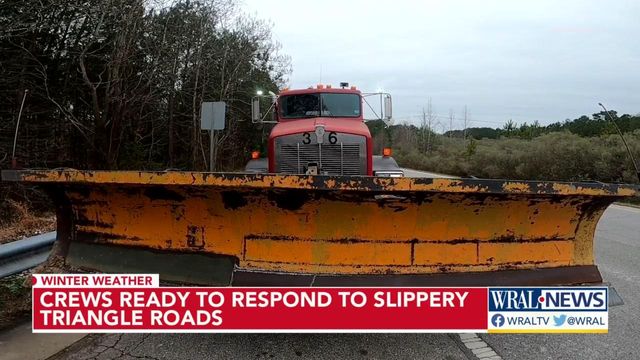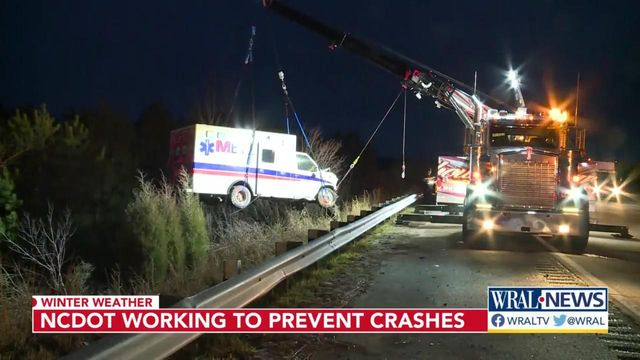If you must drive in ice and snow, go slow, stay in control
Many drivers in central North Carolina forget how to maneuver since they don't have to drive very often in frozen precipitation.
Posted — UpdatedExperts say there are things that drivers should remember to do when roads have glazed over with ice because normal driving functions – braking, accelerating, turning – will take longer to execute.
Before you hit the road in ice and snow
Thoroughly clean off your entire car. Snow and ice on your vehicle can decrease visibility and fly off the car, creating dangerous projectiles to other motorists.
Make sure your windshield wipers and lights are cleared of snow, are visible to other drivers and are working properly.
Check your tires to be sure they are properly inflated and check for tread-depth.
If possible, wait for roads to be plowed and treated before venturing out.
Once on the road, allow plenty of room for snowplows and salt trucks to do their work. Stay at least six car lengths behind these vehicles
Drive-in cleared lanes, or in the tire tracks of other vehicles.
Stock a winter emergency kit in your car
No matter the climate where you live, every vehicle should have a small shovel and an ice scraper.
Keep a bag of sand or kitty litter in the trunk. You can spread it for traction on slick roads.
Pack a blanket, extra gloves, hats and coats. If you’re stuck on the road for an extended period of time you’ll need to stay warm, especially if your vehicle is not running
Pack snacks and water in case you get stranded.
Charge your cell phone and bring a portable charger in the car.
Keep your gas tank full to avoid running low when travel takes longer than anticipated.
Slower is safer when driving in ice and snow
Motorists should remember to slow down and leave about twice the normal distance between vehicles. That gives motorists more time to react, if needed. Normal following distances of three to four seconds for dry pavement should be increased to eight to 10 seconds when driving on icy, slippery surfaces.
Keep your eyes on the road ahead, as you will need more time to react, to brake or turn.
Drivers should also remember to be deliberate, and avoid quick turns and quick stops. Drivers can pretend there's a hot cup of coffee on the dash that shouldn't be spilled.
Here's how to stop your car in a skid
Four-wheel drive doesn't make cars invincible. The feature can help get a car going in the snow, but it has no added benefit when stopping.
If a vehicle does start sliding, steer gently in the direction you want the front of the vehicle to go. Wait for the front wheels to grip the road again. As soon as traction returns, the vehicle will start to steer again.
Over steer happens when a vehicle turns more than the driver intends," Stockburger said. "If that happens, turn the wheel in the same direction the rear of the car is sliding. Again, turning more that you want? Turn the wheel in the same direction the rear of the car is sliding. And no jerky motions to the throttle or brake until you regain control."
Drivers should also remember to clear snow and ice from their vehicle before moving because flying frozen precipitation can put other motorists at risk.
• Credits
Copyright 2024 by Capitol Broadcasting Company. All rights reserved. This material may not be published, broadcast, rewritten or redistributed.






